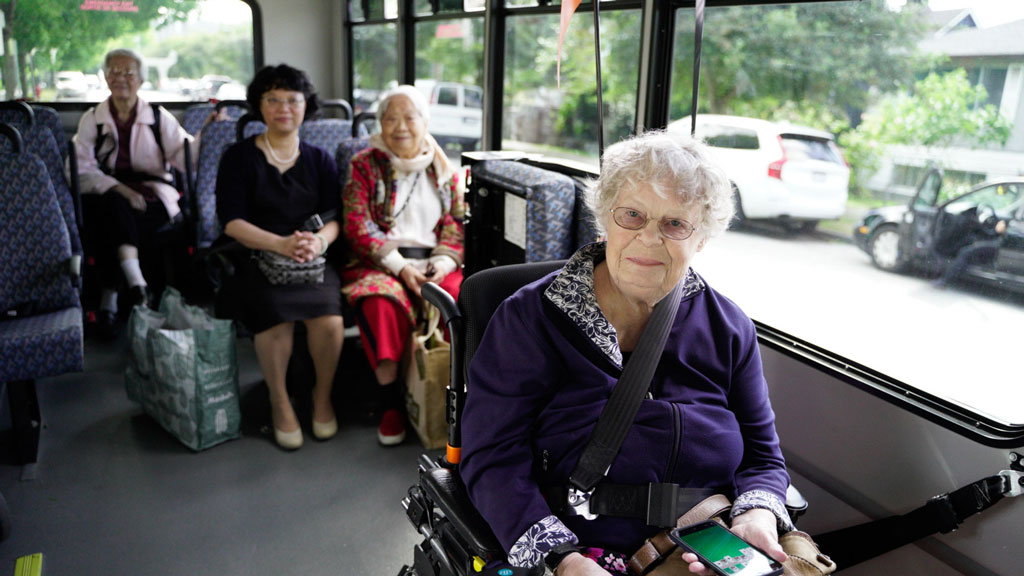As Vancouver Coastal Health (VCH) replaces and renovates long-term care homes, their design is shifting to a new model of senior care.
“Going back to the 1960s and 1970s, long-term care homes were built on the acute care hospital model,” explained Sarah Jordan, director of residential care for VCH. “Most that were owned and operated by health authorities had a hospital ward design style.”
The designs had less privacy and more shared spaces. For example, Banfield Pavilion has 52 residents per floor and three to four residents share a room.
“Over time we recognized that the quality of life of elders in care homes is no longer suitable for the hospital style ward designs of the ‘60s and ‘70s,” said Jordan.
VCH has since refreshed their design guidelines, requiring all new care homes or renovated homes to adhere to the neighbourhood model.
Each floor of a facility is designed as its own “neighbourhood” of homes where tenants can be with those who have similar care requirements. The homes include private bedrooms and bathrooms, and share living, dining, kitchen, patio and social spaces. Each home has 14 to 16 tenants.
Jordan explained this model offers more privacy for things like bathing and more intimacy at mealtime.
“In an acute care hospital model, there is often 50 people concentrated in a dining room three times a day,” said Jordan. “In the household model, you have 14 to 16 in a smaller kitchen and dining room area near a living room. It is more intimate and home-like.”
The new model has private ensuite bathrooms where tenants can shower instead of having to trek to a community bathing area.
Food is prepared in a production kitchen and delivered to the homes via tray service. This gives residents an element of choice.
“That way they don’t have to leave the comfort of their homes,” said Jordan.
But the pandemic has also revealed other advantages.
Jordan said care homes with neighbourhood models were some of the best performing at managing COVID-19 infections.
Since the design requires few communal activities outside the neighbourhood, tenants were able to isolate and limit the spread of the virus.
Jordan said many regions in Canada and elsewhere are moving towards this model.
“I think it likely started with concepts in Europe,” said Jordan, who noted Switzerland’s villages designed for dementia patients probably had an influence.
One of the latest examples of the design is the new Dogwood Lodge planned for south Vancouver.
Work is expected to wrap up in early 2023. The project will be built by Surrey-based Lark Projects Construction under a $50.7 million design-build contract. While work is underway, current tenants will continue to live in the existing 83-bed care home, which opened in 1979.
A handful of the facility’s homes will be optimized for dementia patients and those with tracheotomy and ventilator care needs.
Follow the author on Twitter @RussellReports.











Recent Comments